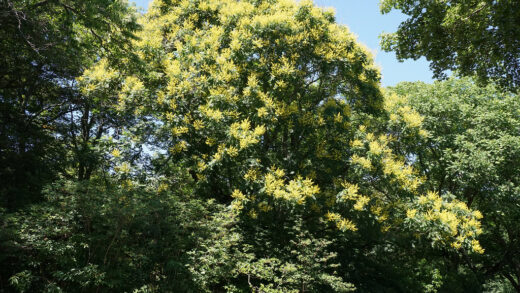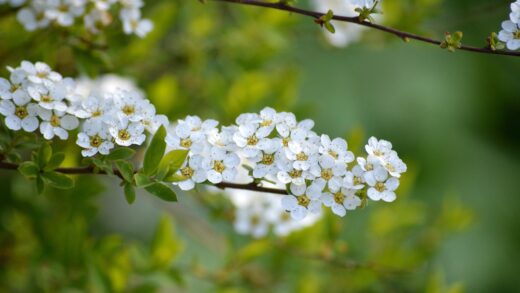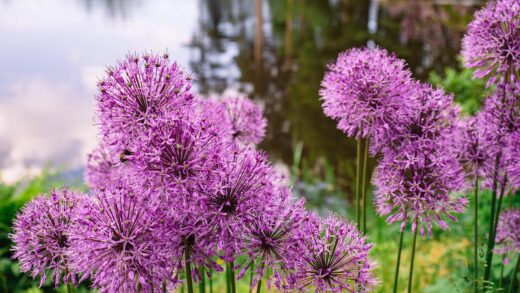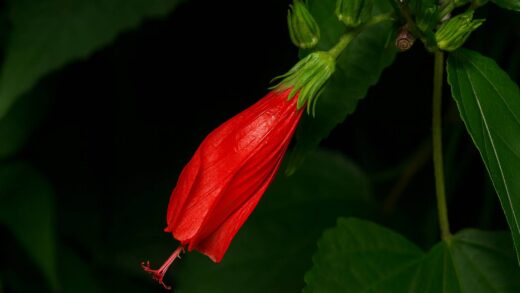To maintain its characteristic deep green, glossy foliage and support its often vigorous growth rate, cherry laurel requires a consistent supply of essential nutrients from the soil. While it is not an exceptionally demanding plant, nutrient deficiencies can lead to poor growth, discolored leaves, and an increased susceptibility to pests and diseases. A well-considered fertilization program, tailored to the specific needs of the plant and the conditions of the soil, is a key component of comprehensive care. This involves not only choosing the right type of fertilizer but also understanding the optimal timing and application methods to ensure the plant can effectively utilize the nutrients provided.
The nutritional needs of cherry laurel are centered around the three primary macronutrients: nitrogen (N), phosphorus (P), and potassium (K). Nitrogen is arguably the most crucial for this plant, as it is a primary component of chlorophyll and is directly responsible for promoting lush, green foliar growth. Phosphorus plays a vital role in root development, energy transfer, and flowering, while potassium contributes to overall plant vigor, disease resistance, and water regulation. In addition to these, a range of micronutrients, such as iron, magnesium, and manganese, are required in smaller quantities but are still essential for various physiological processes.
The best approach to fertilization is one that is based on the actual needs of the plant, which can be determined through observation and, ideally, a soil test. A soil test provides a detailed analysis of the existing nutrient levels and the soil’s pH, which can significantly affect nutrient availability. For example, even if iron is present in the soil, it may be “locked up” and unavailable to the plant if the pH is too high (alkaline). A soil test removes the guesswork and allows you to apply only the nutrients that are truly lacking, preventing over-fertilization, which can be harmful to the plant and the environment.
Generally, a single application of a balanced, slow-release fertilizer in the early spring is sufficient to meet the needs of a cherry laurel for the entire growing season. This timing coincides with the beginning of the plant’s active growth phase, ensuring that nutrients are available when they are most needed. Organic options, such as compost and well-rotted manure, are also excellent choices as they not only supply nutrients slowly but also improve the overall health and structure of the soil, creating a sustainable and beneficial environment for the plant’s roots.
Essential nutrients for cherry laurel
Nitrogen (N) is the most critical nutrient for achieving the dense, vibrant green foliage that makes cherry laurel so popular. As a key building block for proteins and chlorophyll, nitrogen directly fuels the production of new leaves and stems. A plant with adequate nitrogen will exhibit vigorous growth and a rich, deep green color. Conversely, a common symptom of nitrogen deficiency is chlorosis, a uniform yellowing of the leaves. This yellowing typically starts with the older, lower leaves first, as the plant will move this mobile nutrient to support its new growth.
More articles on this topic
Phosphorus (P) is essential for the fundamental processes of energy transfer within the plant, making it vital for overall health and development. Its most significant roles are in promoting strong root growth, which is especially important for newly planted shrubs, and in supporting the processes of flowering and fruit production. While cherry laurel is grown primarily for its foliage, a healthy reproductive cycle is a sign of a vigorous plant. Phosphorus deficiency is less common and its symptoms are more subtle, often appearing as stunted growth or a dull, slightly purplish cast to the leaves.
Potassium (K) functions as a regulator for many of the plant’s internal systems. It helps to control the movement of water, nutrients, and carbohydrates within the plant tissues. It also plays a key role in activating enzymes that are necessary for building strength in cell walls, which makes the plant more resilient to stress from drought, temperature extremes, and disease. A lack of potassium can lead to weak stems and a general lack of vigor. Symptoms of deficiency often appear as yellowing or browning along the margins of the older leaves.
Beyond the big three, micronutrients are required in much smaller amounts but are no less important. Iron (Fe) is a classic example in cherry laurels, as its deficiency is common in alkaline soils. Iron is necessary for chlorophyll synthesis, and its absence leads to interveinal chlorosis, where the leaves turn yellow but the veins remain green, typically affecting the newest growth first. Other important micronutrients include magnesium (Mg), a central component of the chlorophyll molecule, and manganese (Mn), which is also involved in photosynthesis. A balanced fertilizer or healthy, compost-rich soil will usually supply all the necessary micronutrients.
Choosing the right fertilizer
When selecting a fertilizer for cherry laurel, one of the best options is a balanced, slow-release granular product. The term “balanced” refers to a fertilizer that contains roughly equal proportions of the three main macronutrients, nitrogen (N), phosphorus (P), and potassium (K). This is represented by the N-P-K ratio on the packaging, such as 10-10-10 or 14-14-14. A slow-release formulation is particularly beneficial as it breaks down gradually over several months, providing a steady, consistent supply of nutrients to the plant. This avoids the sudden flush of weak, lanky growth that can be stimulated by fast-acting liquid fertilizers and also reduces the risk of burning the plant’s roots.
More articles on this topic
Fertilizers specifically formulated for trees and shrubs, or for acid-loving plants (ericaceous fertilizers), are also excellent choices. These products are designed to provide the appropriate balance of macro and micronutrients needed by woody plants. An ericaceous fertilizer can be particularly helpful if your soil is neutral or slightly alkaline, as it often contains added iron and sulfur. The sulfur helps to gradually lower the soil pH, making existing nutrients in the soil more available to the plant, while the supplemental iron directly addresses the potential for iron chlorosis, a common issue for cherry laurels in high-pH soils.
Organic fertilizers offer a superb alternative to synthetic products and provide benefits that extend beyond simple nutrition. Materials like compost, well-rotted animal manure, fish emulsion, or blood and bone meal release their nutrients slowly as they are broken down by microorganisms in the soil. This process not only feeds the plant but also feeds the soil itself, improving its structure, increasing its water-holding capacity, and fostering a healthy ecosystem of beneficial microbes. Using organic fertilizers is a more holistic approach that builds long-term soil fertility and health, leading to more resilient plants.
Ultimately, the “right” fertilizer depends on the specific conditions of your garden. If you have not conducted a soil test, a balanced, slow-release granular fertilizer is a safe and effective general-purpose choice. However, if your plant is showing specific symptoms of a deficiency, such as the tell-tale signs of iron chlorosis, then a targeted product, such as chelated iron, will be more effective. Always read and follow the instructions on the fertilizer packaging carefully to ensure you are applying the correct amount for the size of your plant, as over-fertilization can cause significant damage.
Application techniques and timing
The optimal time to fertilize cherry laurel is in the early spring, just as the buds begin to swell and new growth is imminent. Applying fertilizer at this stage ensures that a supply of nutrients is readily available to the plant as it enters its most active period of growth. This single, well-timed application is often sufficient for the entire year, especially if a slow-release product is used. A second, much lighter application can be made in the early to mid-summer if the plant appears to be struggling or its growth is weak, but this is not always necessary.
It is crucial to avoid fertilizing in the late summer or autumn. Applying fertilizer, particularly one high in nitrogen, late in the season can stimulate a flush of new, tender growth. This new growth will not have sufficient time to harden off and mature before the first frosts of winter arrive. As a result, it is highly susceptible to frost damage, which can lead to dieback and create entry points for diseases. Ceasing fertilization by mid-summer allows the plant to slow its growth and prepare itself for winter dormancy.
When applying granular fertilizer, the correct technique is to broadcast it evenly over the entire root zone of the plant. The root zone typically extends from the base of the plant out to the dripline, which is the imaginary line on the ground directly below the tips of the outermost branches. Avoid concentrating the fertilizer directly against the main stem or trunk, as this can cause chemical burns to the bark and roots. Use a handheld spreader or simply scatter the granules by hand, wearing gloves, to ensure uniform coverage.
After applying a granular fertilizer, it is essential to water it in thoroughly. Watering serves two important purposes: it helps to move the nutrients down into the soil where the roots can access them, and it washes any stray fertilizer granules off the plant’s foliage, preventing leaf burn. If you are using a water-soluble or liquid fertilizer, it should be diluted according to the manufacturer’s instructions and applied to already moist soil to ensure even distribution and prevent root burn. Proper application technique is just as important as choosing the right product.
Organic vs. synthetic fertilizers
Synthetic fertilizers are manufactured from chemical compounds and are designed to deliver specific, concentrated doses of nutrients. Their primary advantage is that the nutrients are often immediately available to the plant, which can result in a quick response, such as a rapid greening of the foliage. They are also typically less expensive and more readily available than organic options. However, the nutrients in synthetic fertilizers can be easily leached from the soil by rain or irrigation, potentially polluting groundwater, and their high salt concentration can harm beneficial soil microorganisms and even burn plant roots if over-applied.
Organic fertilizers, in contrast, are derived from natural materials such as plant matter (compost, alfalfa meal), animal products (manure, bone meal), or mined minerals. The nutrients in these materials are in a complex form and must be broken down by soil microbes before they can be absorbed by plant roots. This results in a slow, gentle, and sustained release of nutrients that is less likely to burn roots or leach into the environment. The primary benefit of organic fertilizers is that they feed the soil, not just the plant, improving its structure, tilth, and biological activity over time.
The choice between organic and synthetic fertilizers often comes down to gardening philosophy and specific goals. For a quick fix to a visible nutrient deficiency, a targeted synthetic fertilizer might provide the fastest results. However, for long-term plant and soil health, a program based on organic inputs is generally considered superior. Using organic materials like compost builds a resilient and fertile soil that is better able to support healthy plant growth naturally, reducing the need for repeated fertilizer applications. This approach creates a more sustainable and self-regulating garden ecosystem.
Many gardeners find that an integrated approach works best. This might involve building a foundation of healthy soil using organic amendments like compost and then using a balanced, slow-release synthetic fertilizer once in the spring to provide a reliable boost for the growing season. This combines the soil-building benefits of organic matter with the predictable and balanced nutrient supply of a manufactured product. Regardless of the type chosen, the key is to apply it responsibly, following the recommended rates and timing to maximize benefits and minimize any negative impacts.
Recognizing nutrient deficiencies
One of the most common nutrient deficiencies seen in cherry laurel is nitrogen deficiency. This condition typically manifests as a general yellowing, or chlorosis, of the foliage. The yellowing will usually appear on the older, lower leaves of the plant first. This is because nitrogen is a mobile nutrient within the plant, meaning the plant can move it from older tissues to support the growth of new, young leaves at the tips of the branches. The overall growth of the plant will also be stunted, and the foliage may appear sparse. A balanced fertilizer containing nitrogen will usually correct this issue.
Iron deficiency is another frequent problem, particularly for cherry laurels growing in alkaline soils with a high pH. The symptom of iron deficiency is very distinct and is known as interveinal chlorosis. In this case, the leaf tissue between the veins turns a pale yellow or even white, while the veins themselves remain a contrasting dark green. Unlike nitrogen deficiency, iron is an immobile nutrient, so the symptoms will appear first on the newest, youngest leaves at the tips of the stems. This can be addressed by applying chelated iron to the soil or as a foliar spray, and by taking long-term steps to lower the soil pH.
Deficiencies in other nutrients like magnesium and manganese can also cause yellowing leaves, but the patterns may differ. Magnesium deficiency can cause yellowing at the leaf margins or in a V-shape pattern on older leaves, as it is a mobile nutrient. Manganese deficiency, an immobile nutrient, will show interveinal chlorosis on new leaves, similar to iron, and it can be difficult to distinguish between the two without a soil or tissue analysis. In most cases, these less common deficiencies can be prevented by using a balanced fertilizer that includes a full range of micronutrients.
It is important to remember that yellowing leaves are not always caused by a nutrient deficiency. Other factors such as overwatering, underwatering, root damage, soil compaction, or disease can all produce similar symptoms. Before reaching for the fertilizer, it is crucial to investigate these other potential causes. Check the soil moisture, examine the roots if possible, and assess the overall growing conditions. Applying fertilizer to a plant that is stressed by other factors will not solve the problem and can often make it worse.


















